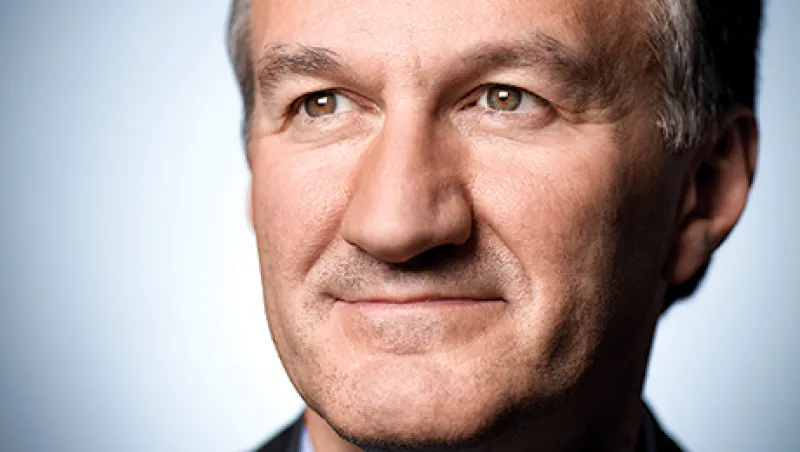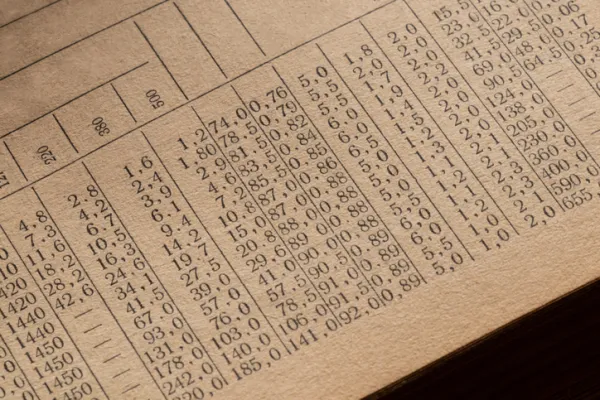Al Monaco, CEO of Calgary, Alberta–based Enbridge, hasn’t had it easy since taking on the top job in October 2012. Last year the C$25 billion ($23.9 billion)–in-revenue pipeline company was back in the news when the U.S. National Transportation Safety Board called its actions after a 2010 spill in Michigan’s Kalamazoo River an episode of “the Keystone Kops.” Monaco also has had to endure political whiplash as his company’s proposed Northern Gateway project, which would run from Edmonton, Alberta, to British Columbia, has been attacked by environmentalists and First Nations tribes and is at the center of infighting between the two Canadian provinces. Whereas Monaco’s predecessor Patrick Daniel delivered exceptional financial results, even if critics chastised Enbridge for its environmental record and tolerance for spills, Monaco has no choice but to try and please every stakeholder: shareholders, politicians, the general public and environmentalists. “It’s a changed world,” he admits.
Enbridge has enormous opportunities in front of it. The company operates at the center of the North American energy market, which is being transformed by the ability to access oil and gas through innovative — if controversial — hydraulic fracturing methods. Though energy independence in the U.S. has been talked about for decades, many experts predict that the country could achieve it over the next decade. At the same time, global energy demand, largely driven by China and India, is expected to increase by 36 percent by 2020.
For Enbridge the challenge is to connect new sources of supply to increased demand. Its Gulf Coast Access Project, which uses mostly existing rights-of-way, is an alternative to TransCanada Corp.’s controversial Keystone XL pipeline. Of course, the new outlook for North American gas and oil has also pushed down prices and motivated competitors such as rail and barge operators.
Monaco, 54, who has been with the company since 1995, sees enormous potential growth in front of him, but he has to do it in a way that is sustainable, reliable and different from the Enbridge of the past — in other words, kind. That’s no easy feat when you’re in the business of physically transporting energy thousands of miles.
The CEO, whose parents moved from Italy to Canada in the 1950s and whose father maintained railroad tracks in Calgary, attended the University of Calgary and became a certified management accountant. He went on to obtain an MBA from the University of Calgary’s Haskayne School of Business. In 1981 he joined Home Oil Co. as an analyst. He moved to Enbridge in 1995, after having been laid off by Home Oil when it was acquired by Anderson Exploration. At Enbridge he has managed numerous areas, including green energy and gas distribution. In 2010, two years before becoming CEO, he took on the role of president of gas pipelines and international operations in addition to his green-energy mandate. Enbridge is planning C$36 billion worth of projects from now through 2017, including the expansion of its liquid pipelines and gas distribution. In the second quarter of 2013, the company’s adjusted earnings were C$306 million, up 12 percent from the same period in 2012. Senior Writer Julie Segal spoke to Monaco last month about sustainability and Enbridge’s operational and reliability program.
Institutional Investor: There’s been a lot of talk in North America about getting Canadian oil to the Gulf of Mexico. Tell us about your plans.
Monaco: We’re committing about C$5 billion in capital to our Gulf Coast access project. It was a breakthrough for us. If you think about all that’s going on in the North American landscape in needing to get supply to refining centers, this project gives us a major conduit — ultimately, somewhere around 800,000 barrels per day from western Canada, linking that production basin to the Gulf Coast refining market. We see an excellent match between western Canada and the Gulf Coast, and we’re providing links there on a timely basis. Everybody’s up in arms about getting crude out of western Canada. But we’re actually doing something about it, and we’ll have this in place, hopefully, by mid-2014.
How have you been able to avoid the controversy that has dogged the Keystone XL pipeline?
With this project we’re using existing rights-of-way. So, sure, there’s always a regulatory process and landowner issues that we need to deal with, but largely speaking, we’re using existing rights-of-way here, so that project hasn’t really attracted as much attention as some of the other projects you hear about. Like any project these days, you’re going to have detractors. There’s just no way that you’re going to have everybody on your side, which is frankly just part of the industry now. There’s a lot more opposition and concerns about the environment.
How does a pipeline company deal with sustainability?
The issue of sustainability is a reality. It’s more critical today because of the focus and emphasis in the public domain. If you look at the history of our business, our main interaction used to be with landowners who we were working with because we crossed their land. But today because of many things — social media, concerns for the environment, concerns for emissions — the general public is scrutinizing the projects we undertake. We have to revisit the way we approach the business so that we address those concerns.
After the Michigan spill Enbridge understandably implemented a safety program. You have a zero-tolerance policy now. Is that realistic?
Let me just explain how we look at it. You’re right, we’ll always have incidents. It’s very hard to avoid. But we need to have a mind-set, I believe, in our industry where incidents are not acceptable. We refer to that as a high-reliability organization. If you look at the nuclear, airline or aerospace industries, those are traditionally high reliability. In the pipeline business — call it energy infrastructure generally— we need to have that same mind-set.
Following that analogy, you can’t have one accident because it’s just so disastrous.
Exactly. Now, it’s going to be pretty impossible to do that. Even high-reliability organizations have accidents. But to evolve your approach, to evolve the culture and approach by the industry and our company, you don’t accept that there will be a certain level of errors. You target zero.
Is there a certain percentage of revenue or profits that needs to be spent on safety and reliability?
We don’t target a certain percentage of revenue for that. Our approach is to assess where we are with the integrity and safety of our operations and then design maintenance and capital investment programs to make sure that we are highly reliable. In 2013 our investment will peak at C$2.4 billion. I think you’re right, though, that costs are going up. But safety and reliability is the price of entry now in our business.
How do you use technology to improve safety and reliability?
It seems kind of odd to be talking about technology when it comes to pipeline infrastructure, but the reality is, in order to really get a clear understanding of what the pipeline looks like, you need to have the most technologically advanced tools within your system. You’ll see in our numbers that we have run the most in-line inspections of any company in North America.
Talk about the changing North American energy production landscape and what it means globally and for the future.
Well, stepping back, if you look at things, we’ve never seen this kind of opportunity set in North America, and it’s really come upon us very, very quickly. If you look at the profile of supply coming out of North America as a whole, you have in the next, say, ten or 15 years a massive increase in heavy-oil production from Canada, somewhere on the order of 3 million to 3.5 million barrels per day. Perhaps more surprising is the increase coming in the U.S. from shale development and other sources. That turns the global energy dynamic on its head.
What that means is, there’s been a total reframing of how you look at energy in North America. You used to primarily move imported product from the coastal areas into the middle of the continent. Now, with this huge uptick in supply in regions like the Bakken [in the northern U.S. and southern Canada], you need to get supply to the coast.
How do you do that?
We need to reconfigure the pipeline transportation grid, and that’s what we’re in the middle of today. You see reversals of pipelines. You see conversions from gas to oil. That’s mostly being driven by a massive increase in supply.
This is a huge opportunity for North America, and it puts us in a very good position in terms of securing the supply we need but also the ability to get value. If you think of the refining capability in North America and the fact that you are now supply-rich, that generates huge value because you’re processing that crude and either it’s for the local market or it can be exported to other countries.
At the same time, opposition to much of this development could derail these efforts. How do you manage that uncertainty?
First, you have to recognize that that’s just going to be there. As I said earlier, not everybody’s going to necessarily agree with energy development projects. But there’s no doubt we need the energy, so that’s the first premise. Second, you need to consult with landowners and other constituents more often. You need to start that process earlier. You need to have an execution capability with people who understand how to make their way through what is now a challenging environment — much more challenging than in the past.
Your company also has huge commitments to green energy. How did Enbridge get involved in wind and other alternatives?
We started our renewable-energy investment strategy about eight years ago. It started out as a small initiative, but ultimately we need to move toward a lower-carbon-intensive community, and we want to be part of that. We think it’s prudent for us to establish a business and grow the business over time to capitalize on that. It’s been quite significant if you look at how much we’ve invested. It’s somewhere on the order of $3 billion on renewable-energy projects.
Do you evaluate green-energy projects using the same metrics you use for other ones?
Yes, it’s important that we think of these projects from an investment point of view in that they need to meet the same investment criteria as the rest of our business. There’s never an unlimited pool of capital, so you need to allocate your capital to the best projects. You can’t do everything. This isn’t something that we do lightly. It meets the same criteria that we have for the liquids or the gas part of our business. Now, part of this too is that we look very favorably upon demand for electricity generation in North America. There’s no doubt that that’s going to grow in the future, particularly in renewables and natural gas, and that’s going to have to facilitate the amount of growth that we have in North America for power demand. • •
Read more about alternative investments.







